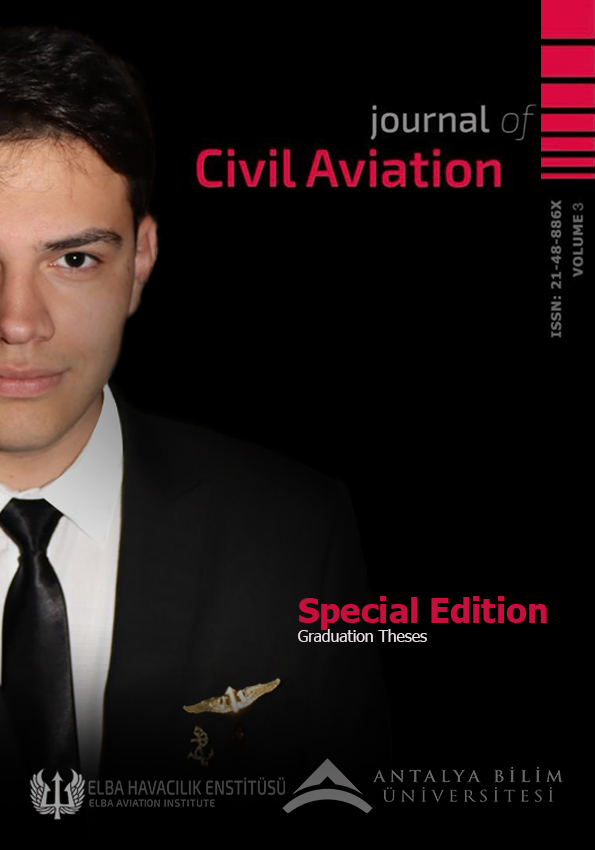alev banu beköz, üner beköz, batuhan çetinkaya
Abstract
Pages 1-4
Download PDF
A dynamic psychometric test item, NOVA 1.01, is introduced to recruit better candidates for pilot training. This study revealed that the scores of the motor-mental constructs measured by the static operational computer-based tests might differ under dynamic conditions. The study also aimed to compare the score skewness of measurements in dynamic conditions to develop an understanding and to introduce dynamic scores that could be used in proposed pilot candidate selection.
Three dimensional random motion was generated by an omni vectoral random motion (ovram) generator. 41 subjects were used to calibrate the testing system and 64 volunteer pilot candidates were tested. Results suggested that this paratest is reliable and valid and can be used as a part of pilot candidate selection protocols.
Mehmet Ali PAKALIN, Güneş ŞANLITÜRK, Aysun SERTEL, Ayşe Betül YETİM
Abstract
Pages 5-7
Download PDF
In this study sampled from an ATO (Approved Training Organization) in Turkey which has an extensive student pilot and instructor pilot capacity; 71 subject (61 males, 10 females), 64 student pilots and 7 instructor pilots were observed for their body weight change within a 3-18 months period and 1-27 kg body weight increase was determined in 58 of 71 subjects. Although the reasons for the increase in body weight in this study are not known, it was discussed that the effects of factors such as sleep disorder, unbalanced nutrition, long distance between the training location and the accommodation point should be reevaluated. Along with the CDV (cardiovascular diseases) and other medical problems that may occur during their professional life as a result of the body weight increases in subjects, there are some worrying publications about the negative effects to their performance and flight safety. Before encountering the heavy cost table that may arise from elimination of this unsafe environment, detailed studies on the causes of body weight increase in pilot training should be carried out. The studies and observations, focusing on the matter we mentioned should involve ATOs, flight training centers. Follow-up and treatment of indicated and/or predictable situations should be handled by authorized Aeromedical examiners (AMEs) directly assigned for the ATOs. We suggest that observation forms and methods as well as treatment protocols for the assigned AMEs are to be legislated and published by the competent authorities.
üner beköz, Erdinc
Ercan
Abstract
Pages 8-9
Download PDF
In this short paper, one of the very rarely reported cases of dental barotraumas, called odontocrexis is reported. A single engine C-172 with no pressure cabin takes off from sea level and climbs up to 12000 feet in relatively short time. 23 year old PIC of the aircraft suddenly goes down with severe tooth pain and becomes incapacitated. His molar tooth breaks and falls apart mostly because of mistreatment.
Aircraft safely lands under control of by flying pilot and PIC’s tooth is successfully restored.
This incident causes considerations upon aeromedical examinations and lack of understanding of basic gas laws.
inanç işten, üner beköz
Abstract
Pages 10-13
Download PDF
While there seem too many controversial subjects and no apparent developments in aviation training in Turkey, pilot training ignores some new apprehensions. A survey of 87 pilot candidates at our aviation institution finds adverse mental and physical conditions being self-medicated and unexamined. Pilot training organizations should be legally required to employ authorized medical examiners to prevent accidents made by candidates flying under the influence.





